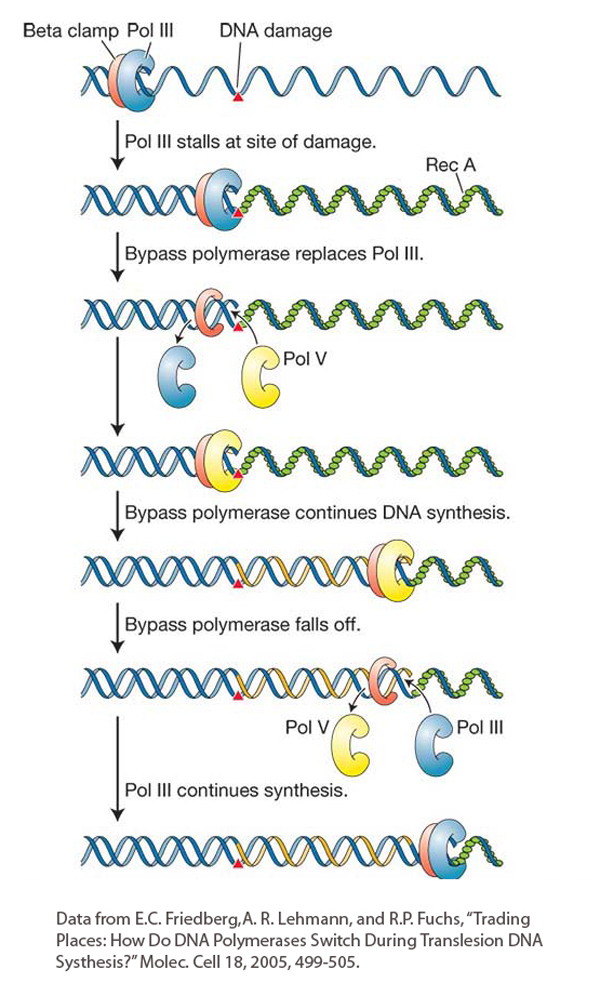
A model for translesion synthesis in E. coli. In the course of replication, DNA polymerase III is temporarily replaced by a bypass polymerase (pol V) that can continue replicating past a lesion. Bypass polymerases are error prone. The bacterial β clamp (red protein) is equivalent to the eukaryotic PCNA.
[Data from E. C. Friedberg, A. R. Lehmann, and R. P. Fuchs, “Trading Places: How Do DNA Polymerases Switch During Translesion DNA Synthesis?” Molec. Cell 18, 2005, 499–